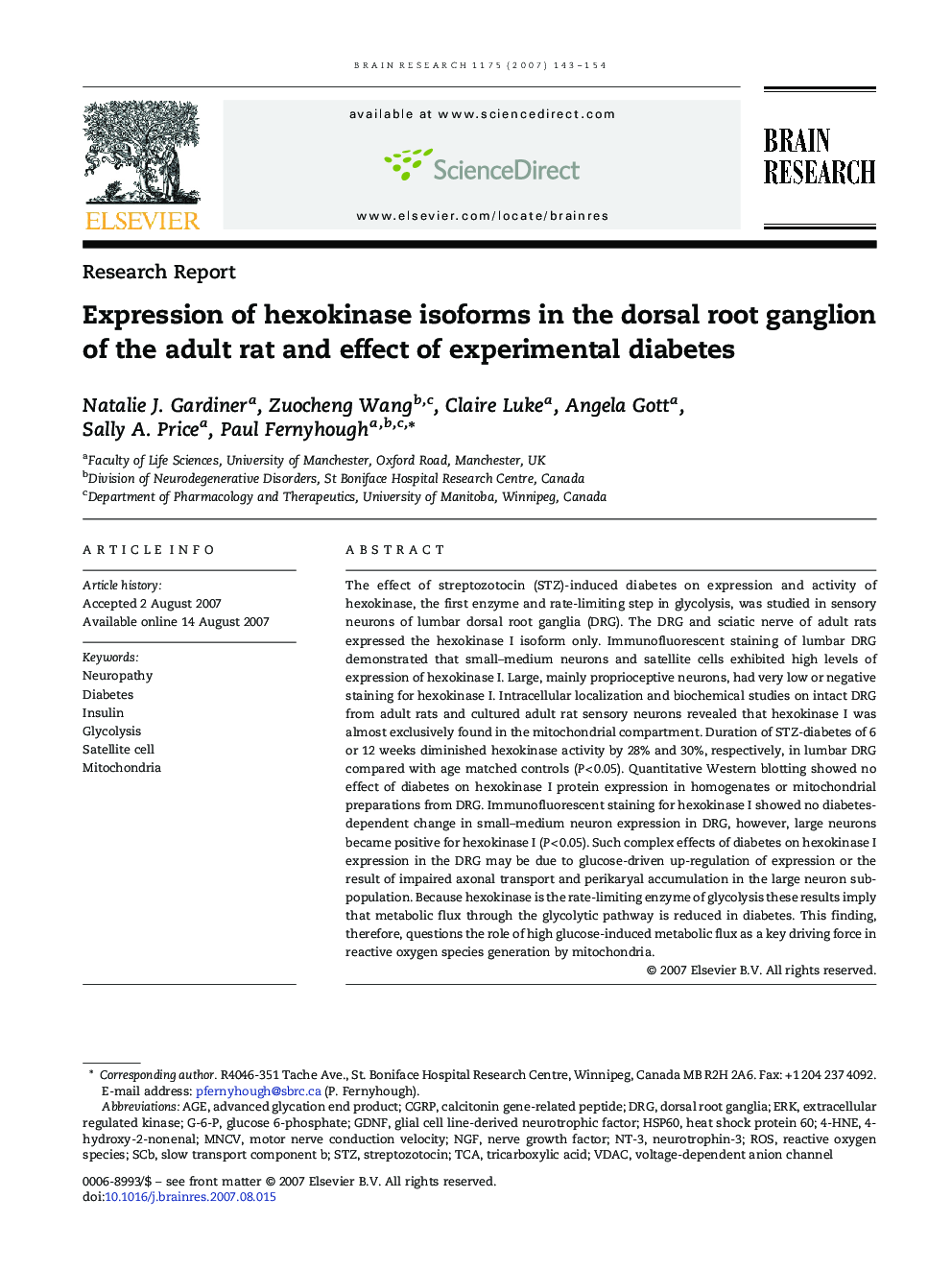| کد مقاله | کد نشریه | سال انتشار | مقاله انگلیسی | نسخه تمام متن |
|---|---|---|---|---|
| 4330564 | 1614264 | 2007 | 12 صفحه PDF | دانلود رایگان |

The effect of streptozotocin (STZ)-induced diabetes on expression and activity of hexokinase, the first enzyme and rate-limiting step in glycolysis, was studied in sensory neurons of lumbar dorsal root ganglia (DRG). The DRG and sciatic nerve of adult rats expressed the hexokinase I isoform only. Immunofluorescent staining of lumbar DRG demonstrated that small–medium neurons and satellite cells exhibited high levels of expression of hexokinase I. Large, mainly proprioceptive neurons, had very low or negative staining for hexokinase I. Intracellular localization and biochemical studies on intact DRG from adult rats and cultured adult rat sensory neurons revealed that hexokinase I was almost exclusively found in the mitochondrial compartment. Duration of STZ-diabetes of 6 or 12 weeks diminished hexokinase activity by 28% and 30%, respectively, in lumbar DRG compared with age matched controls (P < 0.05). Quantitative Western blotting showed no effect of diabetes on hexokinase I protein expression in homogenates or mitochondrial preparations from DRG. Immunofluorescent staining for hexokinase I showed no diabetes-dependent change in small–medium neuron expression in DRG, however, large neurons became positive for hexokinase I (P < 0.05). Such complex effects of diabetes on hexokinase I expression in the DRG may be due to glucose-driven up-regulation of expression or the result of impaired axonal transport and perikaryal accumulation in the large neuron sub-population. Because hexokinase is the rate-limiting enzyme of glycolysis these results imply that metabolic flux through the glycolytic pathway is reduced in diabetes. This finding, therefore, questions the role of high glucose-induced metabolic flux as a key driving force in reactive oxygen species generation by mitochondria.
Journal: Brain Research - Volume 1175, 17 October 2007, Pages 143–154